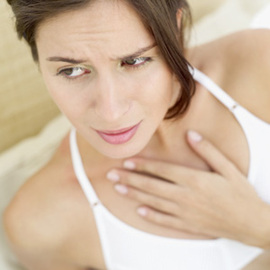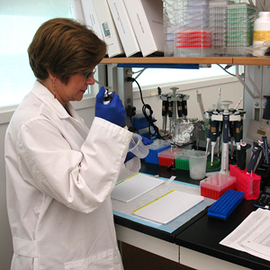Introduction

A vaginal infection yeast is a medical condition where the lining of the vagina is inflamed. It is caused by a fungus called Candida albicans. This fungus and other kinds of bacteria thrive in the genital area, skin, and intestinal tract. When an imbalance occurs or when the fungus count increases, an infection occurs.
Vaginal infections are common occurrences in women worldwide. It is nothing to be scared of as it is a treatable condition with no complications arising from the condition alone. However, there are risk factors involved such as obesity, pregnancy, use of antibiotics, menopause, and a weak immune system. Those who have AIDS, diabetes, and cancer are also predisposed to a vaginal infection yeast.
Here are a few steps to check the presence of a vaginal infection yeast:
Step 1
Check if there are vaginal discharges in the genital area
One of the signs of a vaginal infection yeast is the presence of a vaginal discharge. Discharges as a result of candidiasis are usually whitish or yellowish in color. Imagine how cottage cheese is clumped and this is similar to the discharge you would expect from yeast infection. The flow of discharge varies among sufferers; it can be light, medium, or heavy.
There may be a foul odor associated with the discharge, although not everyone has a smelly secretion. Check crotch area of underwear to see if there are discharges.
Step 2
Verify if there is redness or swelling
Redness and swelling are other signs of a vaginal infection yeast. Feel the area if there are swollen or tender parts. As a result of this, there may be a burning sensation while urinating or even pain during sexual intercourse.
Step 3
Watch out for itchiness
Itchiness in the genital area is also another sign of a vaginal infection yeast. It may be mild or severe. However, avoid scratching the affected area to prevent further irritation and infection.
Step 4
Schedule an appointment with your gynecologist
He/she will be able to verify the presence of candidiasis by performing a physical examination. To rule out the possibility that the vaginal infection yeast has spread to other areas, the gynecologist will also perform a pelvic examination. There will be questions asked regarding your sexual activities, whether your partner exhibits the same symptoms. If the doctor is sure that you have a vaginal infection yeast based on the exam and symptoms, antifungal medication is prescribed immediately such as clotrimazole, fluconazole, and butoconazole.
These drugs are taken through the oral route or applied as creams and suppositories. Depending on how you respond to medication, candidiasis usually clears after a few days. If recurrences happen, larger doses of antifungal drugs are prescribed.
Step 5
Do a swab test
If your doctor is uncertain about your symptoms and to check if there are no other problems, a cotton swab sample is taken from the genital area and sent to the laboratory for confirmation. Lab technicians will look under the microscope for signs of the fungus or bacteria causing the infection.
Once the results are known, your gynecologist will call you and let you know of the results of the test. You might be asked to come back for additional medication. Your physician may prescribe a combination treatment of antifungal drugs and corticosteroids. The latter relieves itching in a vaginal infection yeast.
Tips

1. Practice good hygiene by keeping the genital area clean and moisture-free. Do not use soaps. Rinse the area with clear water instead of using harsh soaps.
2. Avoid wearing tight clothing and underwear as these restrict air circulation in the crotch area, a breeding place for bacteria.
3. Eat yogurt when taking antibiotics to avoid getting a vaginal yeast infection.
4. Refrain from douching as this only irritates the genital area, contributing to vaginal discharge.
5. Use condoms to avoid sexually transmitted diseases.
Sources and Citations
National Institutes of Health
Merck Manual of Medical Information Second Home Edition.